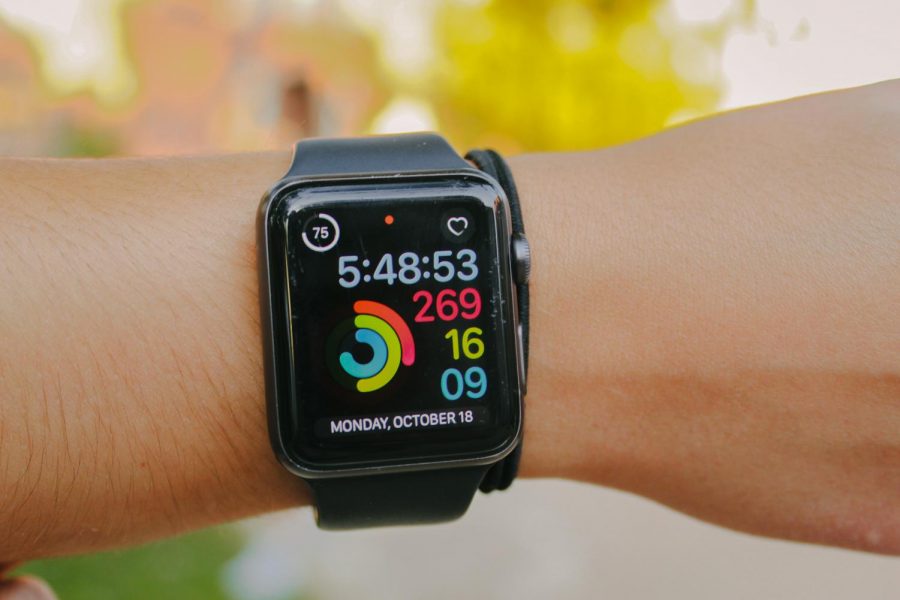Watch Yourself: How Technology has Encouraged Addictive Fitness
The end of the hour is approaching. You have not stood. The reason does not matter: your Apple Watch demands you move for at least a minute. If you want to close your rings for the day, you will oblige. Later that day another alert buzzes on your wrist. “You can still do it!”, your watch boasts, almost tauntingly. But you have had a busy day. A workout was not in your plan: getting one in would mean sacrificing something else of more importance. But, not getting one in, not burning those calories means you will break your streak. The last time that happened you could not find the motivation to work out again for a month. For consistency’s sake, you listen to the 2 x 1-inch glass face on your wrist.
Technology has made fitness more accessible than ever. There are various forms and platforms that can help you stay more in tune with your body than ever. From Apple to Garmin to Fitbit, smartwatches carrying fitness capabilities allow for anyone to be painfully aware of their fitness standards at all times. Several brands make watches that can pair with any smartphone, while others such as Apple designed their smartwatch so that its capabilities blend seamlessly onto your wrist. Depending on your choice of a watch face, a simple flick of your wrist can instantly provide your fitness readings at a glance. Within seconds you are aware of whether you are on track to meet your fitness goals for the day or if you are falling behind. A downside is that this can lead to feelings of guilt or even a lack of confidence depending on how long the streak has been going.
Still, there are good things that wearable fitness trackers offer. For example, a quintessential trait that almost all modern trackers carry is the ability to monitor heart rate. By monitoring your heart rate and analyzing the spikes and falls, you are able to learn more about your performance as well as how you might improve it. Different forums offer various sports and activities in an attempt to help you better track your activity and the amount of energy you burn. Apple specifically has created milestone markers in the form of earnable badges that entice wearers into completing their set daily goals. In order to accomplish these goals, it is easy to make fitness a priority. It is easy to find time in the day to make sure you accomplish your goal. But when it is not so easy is when things can get complicated for wearers.
Life gets complicated. Cutting fitness out is an easy way to uncomplicate things as it can give you anywhere from thirty minutes to three hours back in your day. Not to mention the time it takes to prepare and then return and settle back into doing the things you need to do. Plus, the work you have put in over the course of five months does not disappear in one day without exercise. But wearing your fitness can serve as a blatant reminder of exactly what you are missing when you can not make it to the gym. What started out as a fun way to track calories and steps has arguably turned into an addiction. Before you know it, the watch has created an almost permanent tan line, and you feel incomplete without it adorning your wrist. What has clashed with almost every outfit you wear now makes you feel naked if you are not wearing it.
Truth be told, fitness watches are not going anywhere; they are a previously untapped market with huge growth potential. Apple will keep making updated versions and other companies will do the same in hopes of keeping up. But part of the reason watches in particular are so addicting in the fitness community is the ability to see your fitness within seconds.
Other brands like Whoop and Oura simply track your heart rate, exercise, and even your sleep to help you get a better understanding of how you can perform to your highest potential. Whoop specifically provides intel on your recovery so you can be sure that you are going into each energy dump with appropriate rest beforehand.
Certainly, different disciplines demand different things from their fitness trackers. Whoop has overtaken the CrossFit community. Garmin is increasingly popular with distance runners for the battery life it boasts. Apple is common among the average fitness enthusiast to college and professional athletes. If you are looking for a fitness tracker, be sure to find one that fits your needs. While there are pros and cons to each, some are more arguably apparent than others. Some individuals even combine trackers to optimize their performance. Ultimately, you know what is going to work for you. Being mindful of your tracker’s capabilities and limitations will help you be mindful of your own.
While there are pros and cons to every fitness tracker, just as there is to fitness in general, it is the fitness addiction piece that is new to the fitness community. With the onset of Coronavirus, the fitness industry experienced a boost. More people are becoming dependent on their fitness trackers and rely on them as a source of motivation and validation. But, there are plenty of good things that come along with tracking your fitness as well. By all means, close your rings. Earn your badges. Stand up for a minute and walk around. But make sure you are doing the watching, not the other way around.
Your donation will support the student journalists of Saint Louis University. Your contribution will help us cover our annual website hosting costs.












